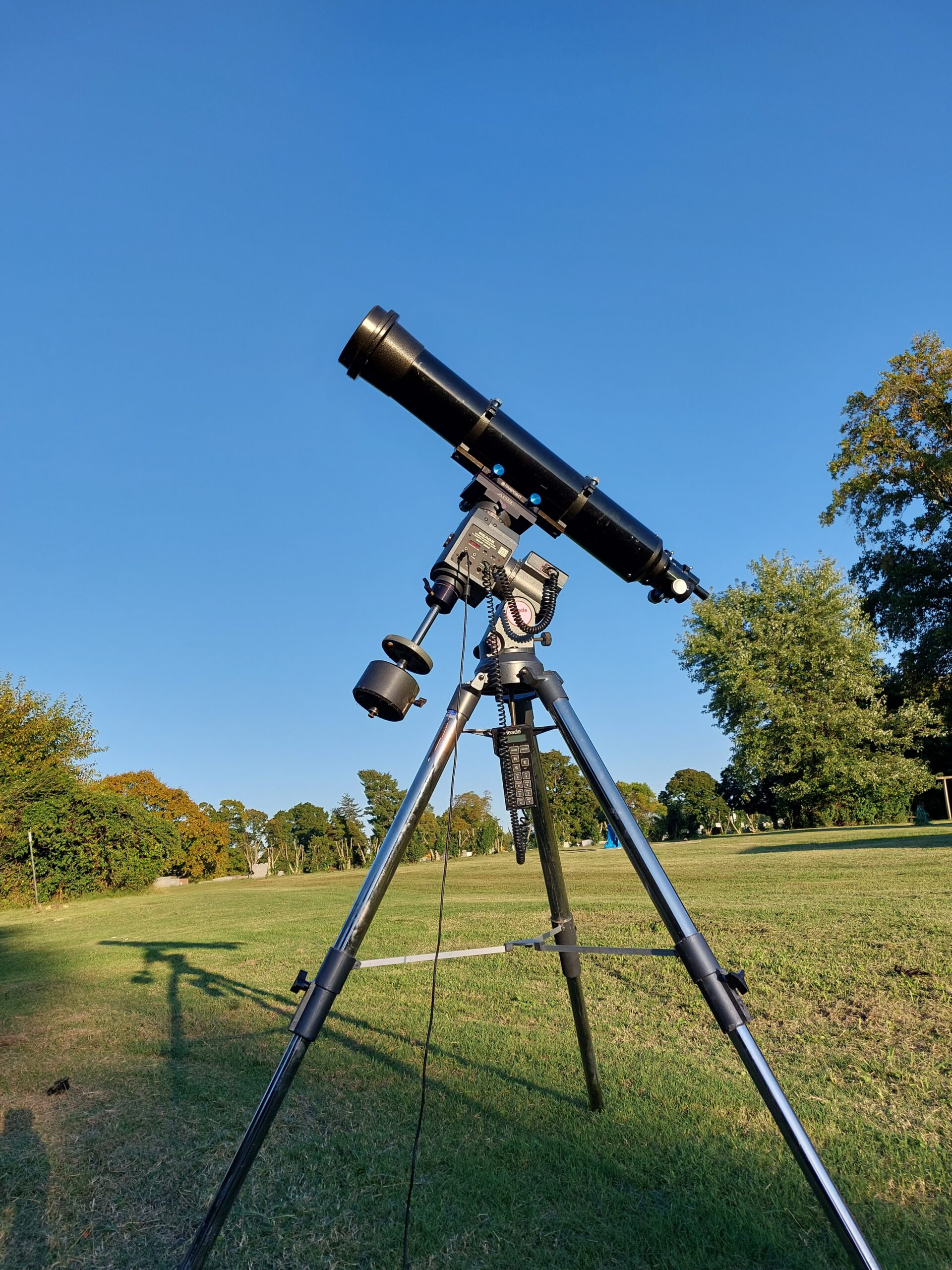The “Beast:” Tale of a 6” Refractor
By Paul Temple
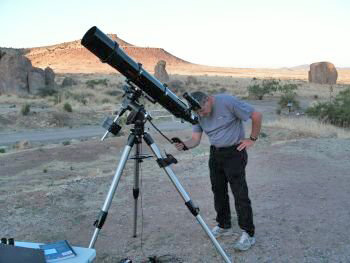
In 2008 the bug of a bigger telescope bit me hard. For years I had wanted a 6” refractor. Why? Because it was the recommended minimum size for planetary observation according to “The Association of Lunar and Planetary Observers” Mars booklet, most likely from the 1960’s. So that size refractor had been on my astronomy dream list, right below a 7” Questar or top of the line Unitron. That is until it became a reality.
After moving to New Mexico where you got clear skies around 320 nights a year, I decided to take the plunge and get a bigger telescope. My goal was to get a 10” dobsonian but that was shoved aside when I saw the ad for a used Celestron 6” achromatic refractor with a mount for 300 dollars! Almost too good to be true. After paying for it, my wife picked it up for me on a trip back to Missouri. She announced that “it was too big to take on the plane so my son would bring it out at Christmas.” When my son showed up several months later, I was helping him unload the trunk and said, “Where is the telescope.” He responded, “Oh that things a beast and it was too big for the trunk so its in the back seat.” In fact, it took up the whole back seat and barely fit between the rear doors!
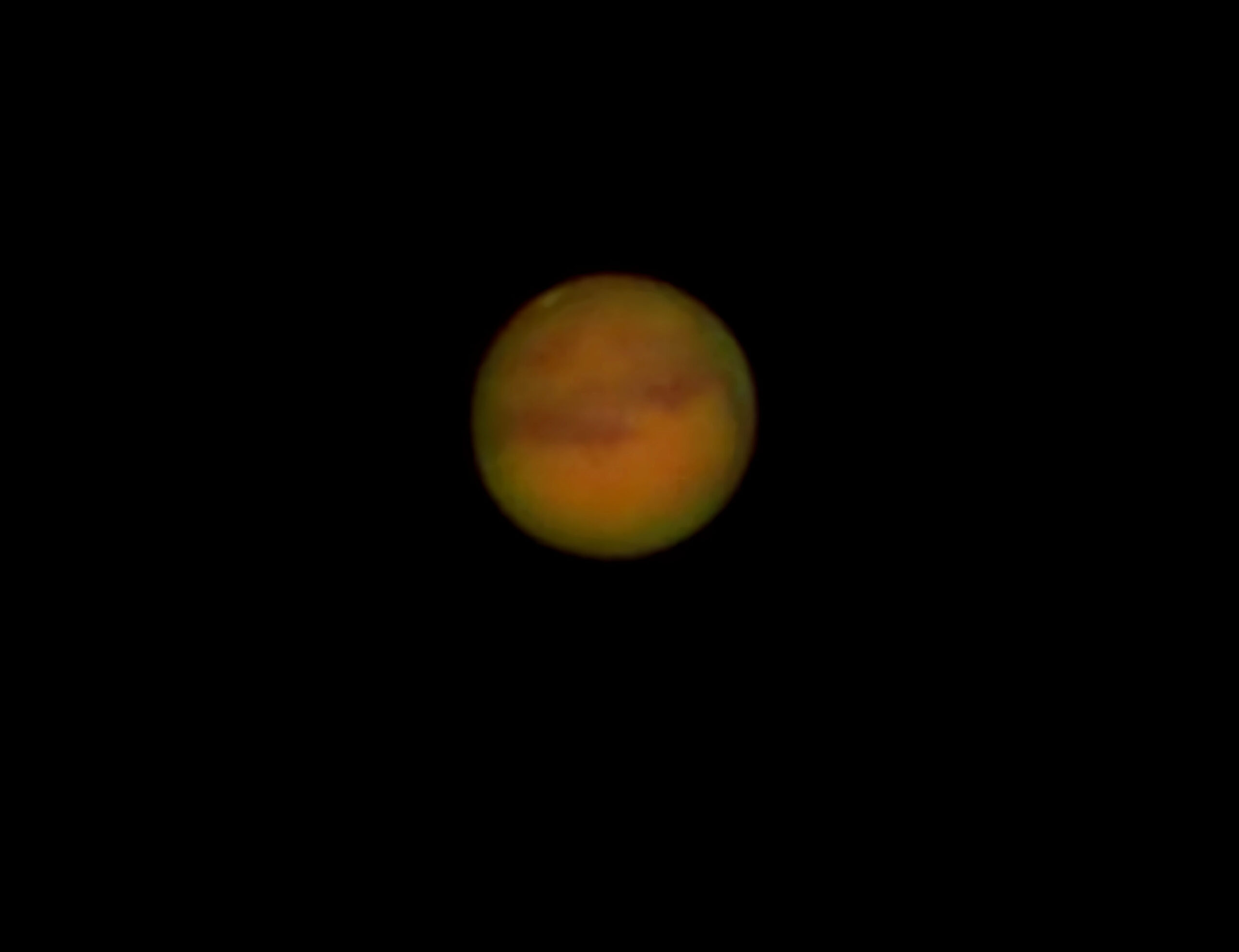
Anyone who has owned one of these scopes knows that moment. That moment when you say, “Oh My, it is bigger than I thought it was.” That moment when you realize that the mount you have will work, but not very well, for a scope of that size! The moment when you realize the optics are amazing, but the focuser is terrible! There are a lot of moments for a 6” F/8 optical tube!
In the 1990’s, Celestron and Meade began importing large Chinese manufactured refractors. When you read reviews, the consensus is that the optics are really good but like so many low-cost scopes, the mount leaves a lot to be desired. They were also known to have false color in the views because of the short focal length. However, just about every reviewer finished that statement with “but not as much as would be expected for such a short focal length refractor.”
My Celestron (CR-6) 6” came with an Orion Astroview Pro mount. This mount was seriously not heavy enough for “The Beast.” If you put a weight on the tripod and were careful not to touch anything you could make it work. In fact, my first astro-imaging was done with this mount and a SBIG ST-7E camera. Photometry of a 15th magnitude star no less! The heavy camera made the scope less stable and more prone to vibration, but you could still use it with some care.
How were the optics? Fantastic! The scope was pretty much on par with an 8” reflector or Schmidt-Cassegrain visually. Stars were really amazing to look at, especially with a 2” eyepiece. They were pinpoints of light, often with their intrinsic color easily noticed. There was false color (chromatic aberration) but none of it showed on the surface of the planets or around any stars but the brightest.
Mars showed a lot of detail with just a light fringing of color around its outside edge. Venus showed more violet edging but again outside the image. The moon was amazing, especially when you put in a 4 to 6 mm eyepiece and really gazed at the detail. I eventually found that a Minus-V filter attenuated the color in visual and a Minus-V, UV/IR stack got rid of most of the color in imaging.
A few years ago, I stumbled on a Meade LXD650/600 mount. This series of mounts were the first Goto mounts commercially available and were made for 4-7 inch refractors. The LXD600/650 held the smaller tubes and the LXD750 held the larger ones. The only difference between the 600 and 650 was the 650 was 19 volts and the 600 was 12 volts. So, the LXD600 became my mount of choice for “The Beast.”
Since then, I acquired a Celestron CGE mount. This class of mount is really the first I have used that holds the 6” rock steady. With a 70 pound payload capacity it holds the long tube of the CR-6 vibration free. You could easily use the 6” F/8 to image deep sky objects and not just the planets.
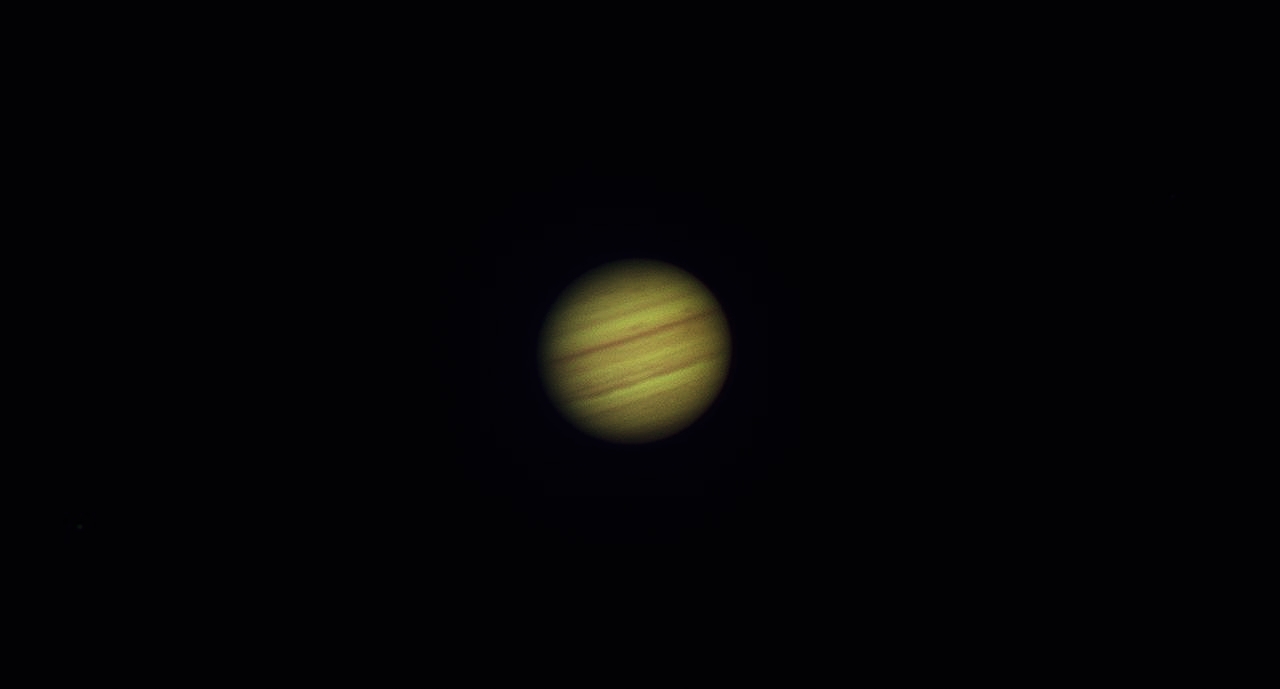
Recently I was doing maintenance on the SC that usually rides on the CGE so I mounted the 6.” What an amazing experience. Using a 2” 36mm eyepiece I cruised around the winter sky doing some astro tourism. I could see the trapezium easily in M 42 and when you put in a 10mm eyepiece could see 6 stars. I could not see the Horsehead nebula but that is not surprising in a small town near Kansas City, MO. The Pleaides were amazing actually showing a little nebulosity with the 36mm eyepiece. M 1 was impressive for this diameter telescope. It is hard to beat the clarity of a refractor, even with the inherent chromatic aberration.
If you own one of these “beasts” here are some tips to make it more useful. Use a Minus-V filter for visual. Stack a Minus-V with a UV/IR for imaging. A Losmandy style D dovetail is more stable than a Vixen style dovetail for this long a refractor. It seems that the wider base makes it much less prone to vibration. Make sure your mount has tight nuts and bolts and that you can add a substantial weight to the tripod. You can also bungee cord the telescope tube to the weights. This helps to dampen vibrations as well.
The stock focusers on these imports work ok for visual but really need to be replaced for heavier eyepieces or cameras. Plus the black glue that they call grease needs to be removed. This “glue” removal goes a long way towards smoothing out the stack focuser. Early on I bought a GSO dual speed focuser. This addition has made the OTA into a real powerhouse for imaging or visual. Before the upgrade I would tape the focusing tube so it would not shift when it moved to a new target! Now it just works and works well!
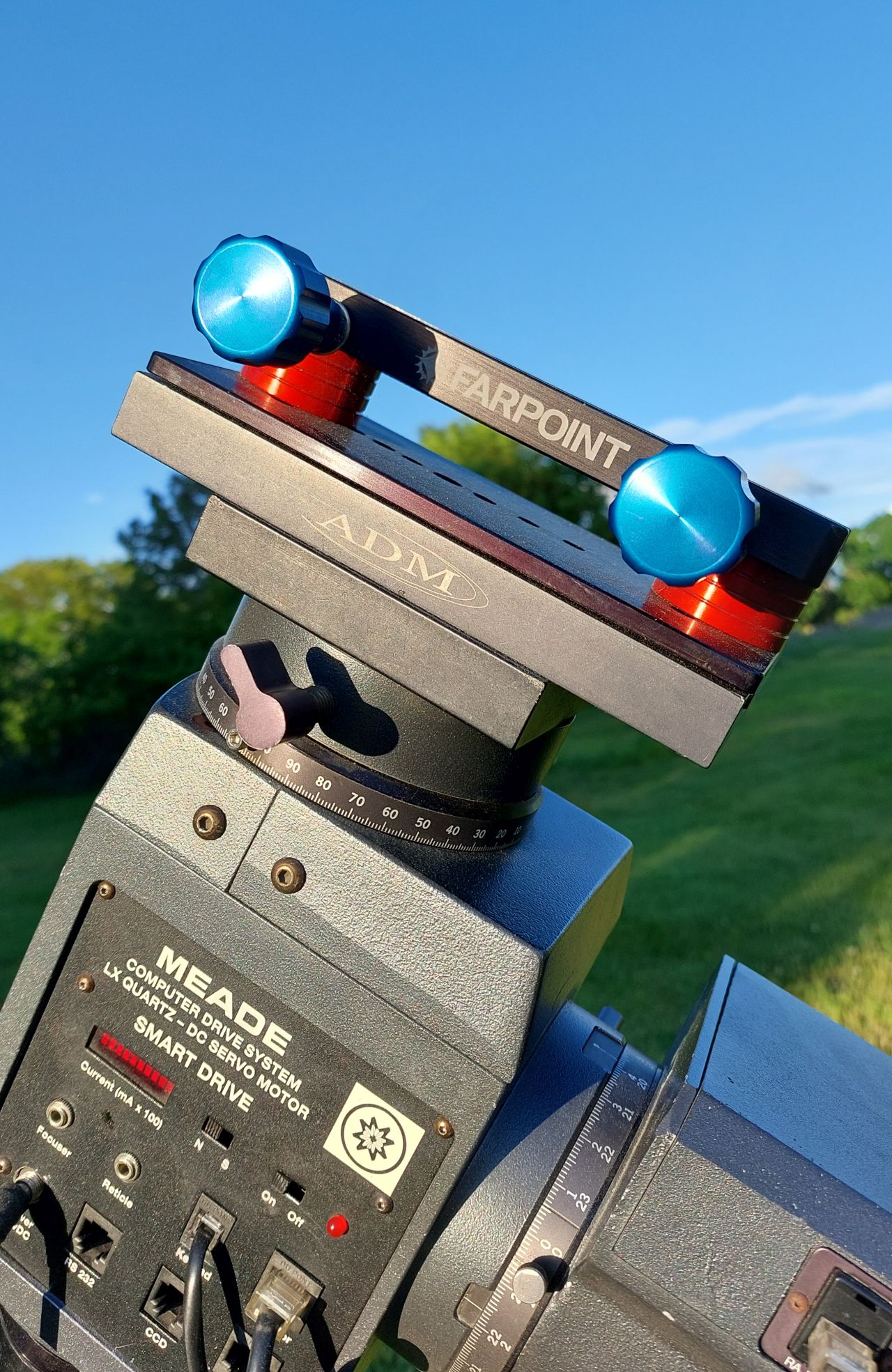
If you are contemplating buying your own “Beast” make sure you remember the good points and bad points about ownership. There is just something special about using a 6” refractor but it also can be a challenge as well. These things are big, unwieldy tubes that are hard to mount and use. Make sure you have enough mount to keep the frustration level low! As for me, I expect to have this telescope until I can no longer lift it up onto its mount. Then I will weep farewell as the new owner drives off with it sticking out of the side window of their mini car!
